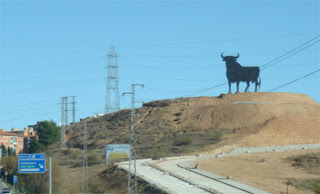Spain in 9 Days; a road trip so intense your friends will think you’re crazy.
Tips on car must-haves, importance of cash, and car rental’s hidden charges
My friends told me, it’s not feasible. My family said that it’s crazy. I was sure that we could pull a road trip in 9 days and see most of Spain.
I started to plan a month in advance. And here is how I pulled it all together: airfare, car rental, hotels in 5 cities, attractions, sightseeing by foot around six cities in the middle, east and south of the country, and even a drive through some villages, towns, and Roman remains.
A few things to remember when planning a road trip in a foreign country
1. Take your driver’s license, and always carry a passport (along with insurance, navigation system, and a hard copy of a road map.)
2. Trip-out the points of your destination with miles, hours, and possible tolls (see how I did it below.)
3. Always have cash in local currency on you when taking a road trip – there are tolls when you least expect them, and they cost anything from three to 20 Euros at a time, which adds up when there are more than 10 tolls on a trip.
4. Find an American car rental in your starting destination that either you belong to at home, or you’ve used it before in Europe. Why American? For obvious reasons – the locals are trained ‘the American way of service,” which means – expect the representatives to speak English, have maps in English, and deliver the somehow-acceptable American terms and quality of service. We used Alamo, even though we were members of Hertz, because Alamo ended up being cheaper for us in Spain. Thus: research, research, research.
5. Opt for no larger than a midsize car – you’ll know what I mean once you’d have to squeeze in between two buildings in a narrow two-way street (I’d suggest to fold your driver’s side mirror. Yes, it’s that narrow. Think Smart car as an ideal size when you choose your rental.) Our car was economy, a 5 door/manual/Air Citroen C3 1.4. Citroen, Dr. Esquerdo, 62, Madrid, 55435, Phone: +34 91 5851244. Hours: Mon-Fri 8:30-7:30 p.m.; Sat 9 a.m. - 3 p.m.; Sun 9 a.m. - 1 p.m.
6. Always check your rental car for any damages. And I mean – ANY, as in dropping down on your knees to look under the hood and stepping up to expect the roof (even it means getting up the neck of your boyfriend, if you are not taller than 5 feet.) Any little scratch would be taking into account when you return it. (And don’t forget the essentials of comfort – AC, smoke ash-free compartments, and workable seats that can move and recline as needed. (You’ll be surprised how important it will become when you spend 9 days on a road in a country where rest zones are as rare as armadillos in Alabama.)
7. Have a first-aid kit that you can put together at home yourself; no need to spend money on one from a store.
8. Have your own mini-soup bar or a hand sanitizer on a road – not many gas and/or roadside restaurants have either paper towels or soap.
9. Be prepared to spend as much as 30 Euro (on average) for every 400 km (250 miles.)
10. Buy snacks, water and soft drinks for a road at a store in the city, not at a convenience store in the country. You will save up to 10-15 Euros on this alone. (Just think of the price difference between Mike Ike’s at CVS vs. a movie theater. Same deal.) Besides, you won’t see many gas and convenience stores along the way. And I wouldn’t encourage anyone to eat at local roadside restaurants.
11. Use a car only for transportation from city to city, not in the city. You’ll find that most of European cities, including Spain, have very narrow streets, limited parking (if at all) and car buglers.
12. When planning to stay only one-two-three days in a city, plan out your daily itineraries and group them according to a metro stop to minimize the waste of time commuting in the city, and to maximize the time for sightseeing and dining.
13. Most of the hotel booking sites, such as Hotels, Ryanair, and Expedia offer descriptions of attractions around the hotel, including the mileage. Always see if there are metro stations close by, because in most of the cases, you’d be traveling by subway, or walking. If you still have doubts about the convenience of a hotel location, find this hotel online (their website) and an email for their front desk (and/or management). Email them with additional questions. I’ve done it for my trips in most of Europe, and 99.9 percent of the time, the response was quick and helpful (just give them the courtesy of time difference.)
And research, research, research!





Comments